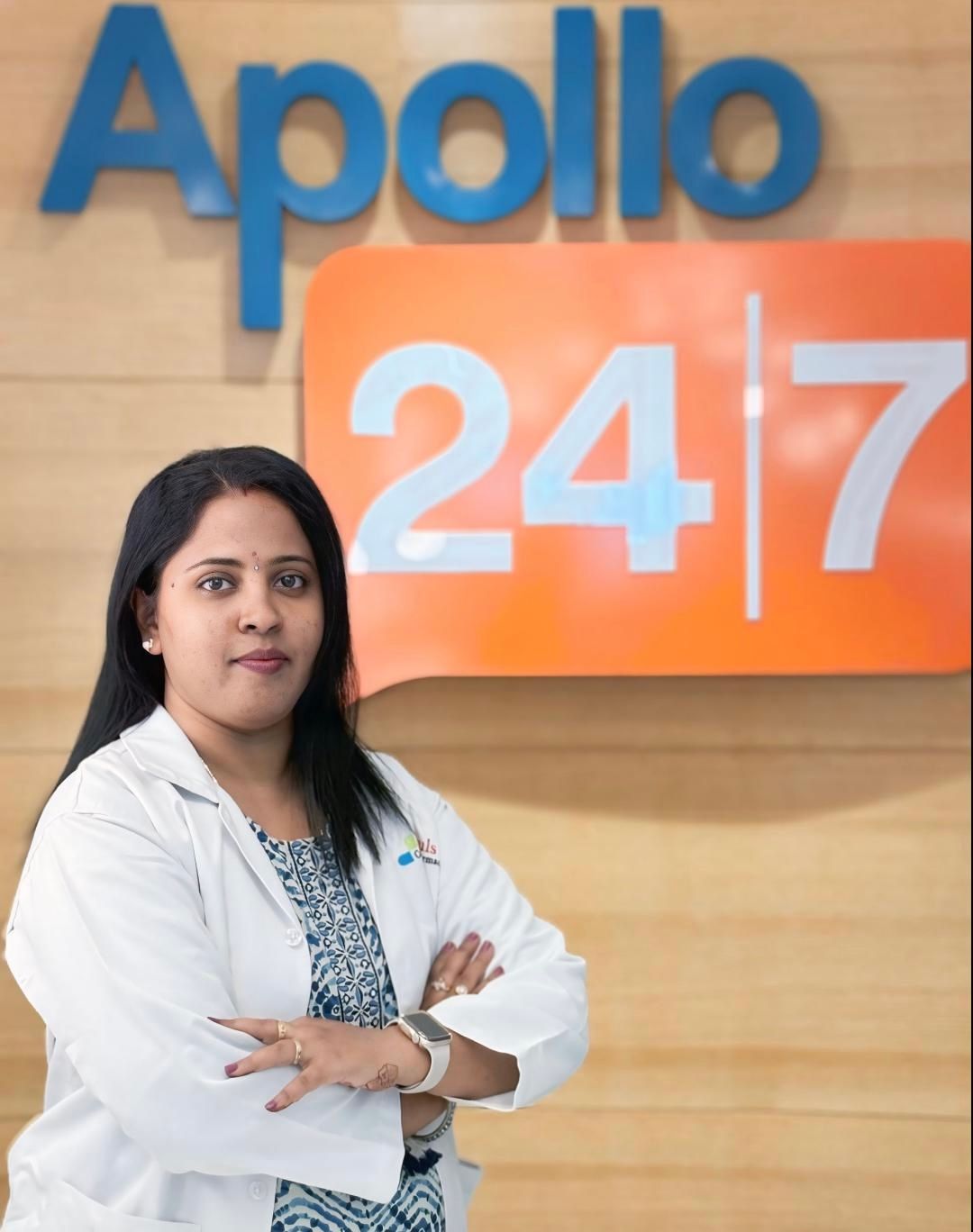Atrop-PD Paediatric Opthalmic Solution 5 ml
Atrop-PD Paediatric Opthalmic Solution 5 ml is used to treat uveitis or iritis (inflammation in the eye), cycloplegia (paralysis of the ciliary eye muscle), myopia (near-sightedness), amblyopia (decreased eyesight due to abnormal vision development), to widen the pupil before certain eye examinations and convergent strabismus (cross-eyes or squint). Atrop-PD Paediatric Opthalmic Solution 5 ml relaxes the muscles in the eye, thereby making the pupil appear larger. This makes it easier for an eye examination. It also reduces pain and allows the inflamed part of the eye to rest and recover by relaxing the eye muscles.
₹132*
₹112.2*
MRP ₹132
15% CB
₹19.8 cashback(15%)
Free Delivery
With Circle membership
(Inclusive of all Taxes)
This offer price is valid on orders above ₹800. Apply coupon PHARMA10/PHARMA18 (excluding restricted items)
Know Your Delivery Time
Provide Delivery Location


Secure Payment

India's Most Trusted Pharmacy

Genuine Products
Composition :
Manufacturer/Marketer :
Consume Type :
Return Policy :
About Atrop-PD Paediatric Opthalmic Solution 5 ml
Atrop-PD Paediatric Opthalmic Solution 5 ml belongs to a group of medicines called mydriatics and cycloplegics used to treat uveitis or iritis (inflammation in the eye) and myopia (near-sightedness). It is also indicated for cycloplegia (paralysis of the ciliary eye muscle), mydriasis (dilation of the pupil), and the penalisation of the healthy eye in the treatment of amblyopia (decreased eyesight due to abnormal vision development). Besides this, Atrop-PD Paediatric Opthalmic Solution 5 ml is also used before certain eye examinations to widen the pupil and to diagnose eye problems such as blurred vision in children below 6 years and in children with convergent strabismus (cross-eyes or squint).
Atrop-PD Paediatric Opthalmic Solution 5 ml contains ‘atropine’, which relaxes the muscles in the eye, thereby making the pupil of the eye appear larger. This makes it easier for an eye examination. Atrop-PD Paediatric Opthalmic Solution 5 ml reduces pain and allows the inflamed part of the eye to rest and recover by relaxing the eye muscles.
You are advised to use Atrop-PD Paediatric Opthalmic Solution 5 ml for as long as your doctor has prescribed it for you, depending on your medical condition. In some cases, you may experience certain common side effects such as dry mouth, palpitations, nausea, constipation, and vomiting. Most of these side effects do not require medical attention and will resolve gradually over time. However, you are advised to talk to your doctor if you experience these side effects persistently.
Consult a doctor before using Atrop-PD Paediatric Opthalmic Solution 5 ml if you are pregnant or breastfeeding. Atrop-PD Paediatric Opthalmic Solution 5 ml might cause blurred vision; so, avoid driving or operating machinery until your vision is clear. Avoid touching the tip of the dropper as it may contaminate the contents. Always wash your hands after use. Keep your doctor informed about your health condition and the medicines you are taking to prevent any side effects/interactions.
Uses of Atrop-PD Paediatric Opthalmic Solution 5 ml
Directions for Use
Medicinal Benefits
Atrop-PD Paediatric Opthalmic Solution 5 ml belongs to a group of medicines called mydriatics and cycloplegics used to treat uveitis or iritis (inflammation in the eye) and myopia (near-sightedness). Besides this, Atrop-PD Paediatric Opthalmic Solution 5 ml is also used before certain eye examinations to widen the pupil, to diagnose eye problems such as blurred vision in children below 6years and in children with convergent strabismus (cross-eyes or squint). Atrop-PD Paediatric Opthalmic Solution 5 ml relaxes the muscles in the eye, thereby makes the pupil of the eye appear larger. This makes it easier for an eye examination. Atrop-PD Paediatric Opthalmic Solution 5 ml reduces pain and allows the inflamed part of the eye to rest and recover by relaxing the eye muscles. It is also indicated for cycloplegia (paralysis of the ciliary eye muscle), mydriasis (dilation of the pupil), and for the penalisation of the healthy eye in the treatment of amblyopia (decreased eyesight due to abnormal vision development).
Side Effects of Atrop-PD Paediatric Opthalmic Solution 5 ml
- Dry mouth
- Palpitations
- Nausea
- Constipation
- Vomiting
- Mild stinging sensation in the eye
Storage
Drug Warnings
Do not use Atrop-PD Paediatric Opthalmic Solution 5 ml if you are allergic to any of its components, if you have closed-angle or narrow-angle glaucoma. Inform your doctor if you have a fever, heart problems, glaucoma, ocular hypertension, kidney or liver problems. Consult a doctor before using Atrop-PD Paediatric Opthalmic Solution 5 ml if you are pregnant or breastfeeding. Atrop-PD Paediatric Opthalmic Solution 5 ml might cause blurred vision; so, avoid driving or operating machinery until your vision is clear. Inform your doctor if you haven’t had your eyes checked recently.
Therapeutic Class
Drug-Drug Interactions Checker List
- HYOSCYAMINE
Diet & Lifestyle Advise
- Eat a balanced diet.
- Avoid smoking.
- Include fish, nuts, legumes, citrus fruits, green leafy vegetables, carrots, sweet potatoes, and eggs, as they help improve eyesight.
- Get regular eye examinations done.
- Always wash your hands before applying contact lenses.
- To prevent digital strain, look away every 20 minutes for 20 seconds at something 20 feet away.
- Reduce screen time. Avoid staring at digital screens for a long time.
- Avoid touching your eyes with dirty hands as it might cause infection.
Habit Forming
How Atrop-PD Paediatric Opthalmic Solution 5 ml Works
What if I have taken an overdose of Atrop-PD Paediatric Opthalmic Solution 5 ml
Alcohol
Caution
It is not known if alcohol interacts with Atrop-PD Paediatric Opthalmic Solution 5 ml. Please consult your doctor if you have any concerns.
Pregnancy
Caution
Please consult your doctor if you have any concerns regarding this; your doctor will prescribe only if the benefits outweigh the risks.
Breast Feeding
Caution
Consult your doctor before using Atrop-PD Paediatric Opthalmic Solution 5 ml if you are breastfeeding. Your doctor will decide if Atrop-PD Paediatric Opthalmic Solution 5 ml can be used by breastfeeding mothers or not.
Driving
Unsafe
Atrop-PD Paediatric Opthalmic Solution 5 ml might cause blurred vision. So, avoid driving or operating machinery until your vision is clear.
Liver
Caution
Please consult your doctor if you have any concerns regarding the usage of Atrop-PD Paediatric Opthalmic Solution 5 ml in patients with liver impairment.
Kidney
Caution
Please consult your doctor if you have any concerns regarding the usage of Atrop-PD Paediatric Opthalmic Solution 5 ml in patients with kidney impairment.
Children
Safe if prescribed
Atrop-PD Paediatric Opthalmic Solution 5 ml should be used in children only if prescribed by the doctor.
Country of origin
Manufacturer/Marketer address
Author Details
We provide you with authentic, trustworthy and relevant information
FAQs
Disclaimer
Product Substitutes




_0.jpg?tr=q-80)






